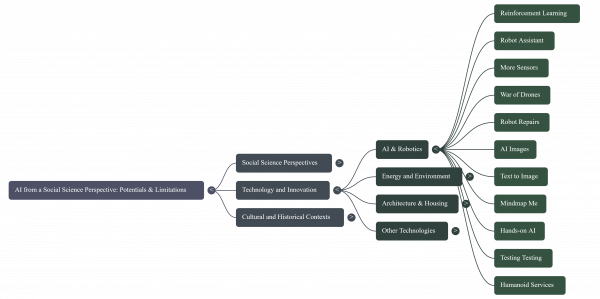AI tools are great to assist learners in the task to get more structure into larger documents or books. It is up to the teachers or lecturers to use the tools themselves to pre-structure content they want other persons to learn. Mind maps are useful to summarise larger content and offer a tree-like structure to a text moving from the general to more specific content and then into details by at the same time not loosing sight of the overall structure of the content. Basics can be provided by Google’s NotebookLM and you may rework this basic structure yourself linking the mind map to the detailed content. Learning may start with a comprehensive mind map at the beginning to move on to details. Alternative versions of a mind map are equally feasible to come up with new combinations of subjects. This can be done using the tags of the blog entries in addition to the categories and fast search keywords.
It is a fascinating way to mind map yourself based on longer texts written by yourself. This clarifies a bit what potential readers or learners are likely to retain from reading your document(s) or blog entries.
Its worth trying, as others will most likely use these tools from now onwards anyway, whether we like it or not.
Image: Google NotebookLM Mind Map of my AI blog entries 2025-9-9.


